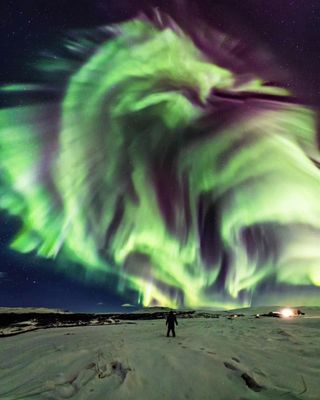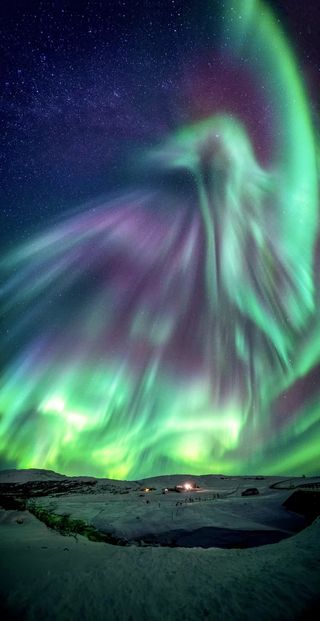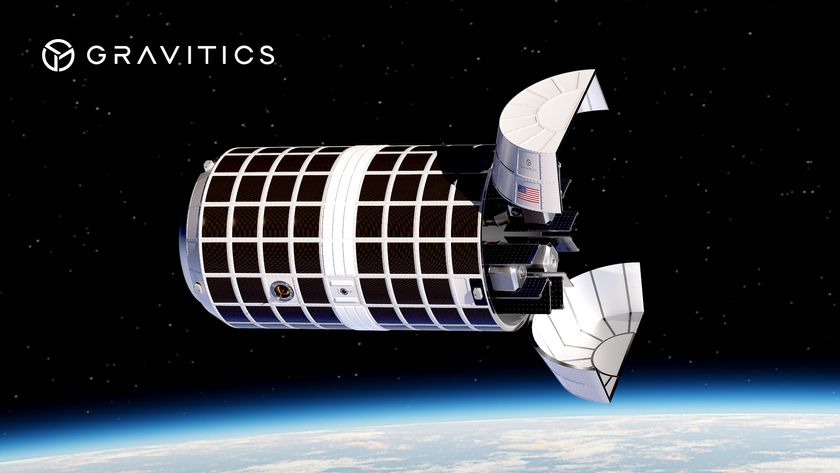A 'Dragon Aurora' Appeared in the Sky Over Iceland, and NASA Is a Little Confused

A gargantuan green dragon hisses in the sky over Iceland. Either "Game of Thrones" really upped its production budget for its final season, or the sun belched a barrage of charged particles into our atmosphere again.
As much as any of us would like to see a real dragon breathe flames into the winter sky, buzzkill NASA blames solar activity — as usual — for the writhing, "fire-breathing"- aurora that loomed over Iceland earlier this month.
Auroras like this occur when some of the sun's many magnetic field lines twist together and burst, creating sunspots. Charged particles gush out of these spots and soar on the solar wind deep into space. If Earth happens to be in the way of such a stellar energy storm, the particles crash into our planet's own magnetic field and careen through our atmosphere toward the poles. Along the way, those particles interact with molecules of oxygen, nitrogen and other elements in our atmosphere to create the dazzling light show we call the aurora.
Related: Spaced Out! 101 Astronomy Photos That Will Blow Your Mind
While auroras themselves are not an unusual sight, NASA noted that this Icelandic dragon (which also resembles evil queen Maleficent's dragon incarnation from Disney's "Sleeping Beauty") appeared at an unexpected time. "No sunspots have appeared on the Sun so far in February, making the multiple days of picturesque auroral activity this month somewhat surprising," the editors of NASA's astronomy picture of the day blog wrote on Feb. 18.
Photographers Jingyi Zhang and Wang Zheng were equally surprised to see the mythical beast appear in the sky over Iceland. According to NASA, Zhang's mother was so excited by the unusual auroral activity that she ran outside with the photographers (and ended up in the foreground of Zhang's picture).

And the dragon wasn't the only supernatural creature to appear in the aurora that night.
Get the Space.com Newsletter
Breaking space news, the latest updates on rocket launches, skywatching events and more!
"Interestingly, my partner photographed a phoenix at the same time," Zhang told Live Science in an email.
Originally published on Live Science.
Join our Space Forums to keep talking space on the latest missions, night sky and more! And if you have a news tip, correction or comment, let us know at: community@space.com.

Brandon has been a senior writer at Live Science since 2017, and was formerly a staff writer and editor at Reader's Digest magazine. His writing has appeared in The Washington Post, CBS.com, the Richard Dawkins Foundation website and other outlets. He holds a bachelor's degree in creative writing from the University of Arizona, with minors in journalism and media arts. He enjoys writing most about space, geoscience and the mysteries of the universe.











